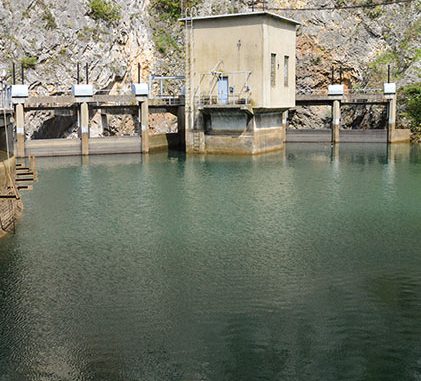
Small-hydro power (SHP) is a simple, affordable, practical and low-cost energy solution. It can improve energy access for remote and vulnerable rural communities, create employment and business opportunities, and help combat climate change. SHP technologies are easily adaptable for local conditions, both geographical and infrastructural. They have the lowest electricity generation prices as compared to other off-grid technologies. India’s SHP potential remains largely untapped. Growth in the SHP segment has been rather slow as compared to other renewable energy segments. This has been mainly due to high capital costs, unpredictable rains, long-winded bureaucratic procedures, low returns and accessibility issues. An overview of the small-hydro market in India and globally…
Global SHP market
The installed SHP capacity (for plants up to 10 MW) globally is estimated at 78 GW by the World Small Hydropower Development Report 2019. SHP represents only 1.5 per cent of the world’s total installed electricity capacity, 4.5 per cent of the total renewable energy capacity and 7.5 per cent (less than 10 MW) of the total hydropower capacity. Together, the top six given countries – China, the US, Japan, Italy, Norway and Turkey – account for 67 per cent of the world’s total installed SHP capacity.
Region-wise, Asia has vast SHP resources. However, they are unevenly distributed across the continent. The total installed SHP capacity in Asia is 51,069 MW as against the total estimated potential of 138,276 MW (for SHP up to 10 MW). This indicates that approximately 37 per cent has been developed so far.
Segment size and growth in India
India’s SHP programme, administered by the Ministry of New and Renewable Energy (MNRE) at the national level and the state electricity departments at the state level, receives major contributions from private investors. The major focus of the programme is to make SHP projects cost effective and reliable. To this end, a range of documents have been issued for developers, manufacturers, consultants and regulators, covering various aspects of SHP activities. India has a strong equipment manufacturing base for development including for export to other regions, especially to southern and eastern Asia.
Among the South Asian countries, India is a leader in SHP development. The estimated potential of small/mini/micro hydel projects in the country is 21,133.65 MW across 7,133 sites located in different states of India. Of this, over 4 GW of capacity has been developed.
The MNRE has categorised projects with a capacity of up to 25 MW as SHP projects. SHP projects are further categorised into small, mini and micro hydel projects based on their capacity (micro hydel £0.1 MW, mini hydel > 0.1 MW to £2 MW and small hydel > 2 MW to £25 MW). The total installed SHP capacity stands at 4,740 MW as of September 2020. The total generation from SHP plants in 2019-20 stood at 8,702.75 MUs, up from 8,236.36 MUs recorded in 2018-19. The capacity addition over the past year has been meagre, with 129 MW added between September 2019 and September 2020.
The national SHP target is to achieve a cumulative capacity of 5,000 MW by 2022, as against the overall renewable energy target of 175,000 MW. Currently, there are 109 projects aggregating 529.24 MW at various stages of implementation as per the MNRE. Of these, Himachal Pradesh has the highest capacity at around 179.6 MW followed by Kerala at 80.5 MW and Odisha at 57 MW.
The segment has to install 260 MW to achieve the 5,000 MW target. Given the current pace of capacity addition, this can be achieved with a policy impetus. The states leading SHP development in India are Karnataka and Himachal Pradesh with 1,280.73 MW and 911.51 MW of installed capacity respectively. The other states are slowly warming up to the segment.
In a recent development, the Odisha government inaugurated the 24 MW Baitarani SHP project in November 2020 at Singhanali in Odisha. Meanwhile, Hyderabad-based Baitarani Power Project Private Limited has commissioned this hydropower project, which will generate 100 MUs of electricity and supply power to the state grid.
Issues and concerns
The segment has been overshadowed by the dynamic solar and wind segments, and needs greater attention to be able to grow properly. The reasons for the sluggish growth of the hydropower segment include delays in obtaining approvals and permissions, high tariffs and modest returns. There is limited interest from private players in this segment. Further, geographical and seasonal factors like unpredictable rains result in variations in power generation, which affect the revenue stream. Also, instructions to back down and transmission constraints are some of the factors that can have a major impact on the viability of projects.
